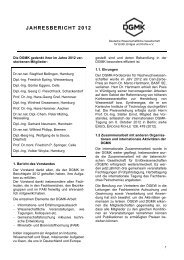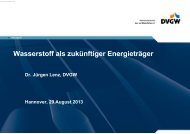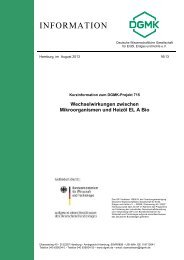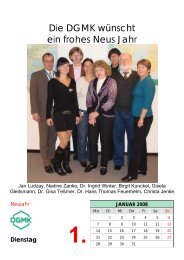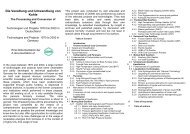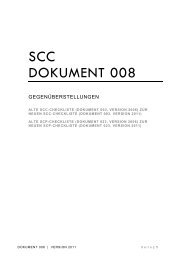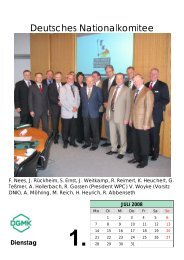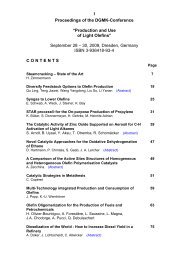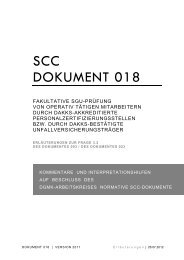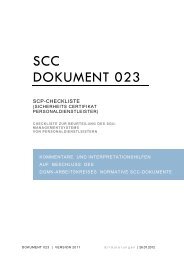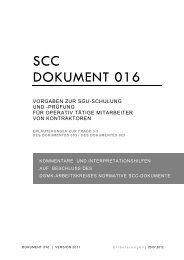Syngas Chemistry: Key Technology for the 21st Century
Syngas Chemistry: Key Technology for the 21st Century
Syngas Chemistry: Key Technology for the 21st Century
Create successful ePaper yourself
Turn your PDF publications into a flip-book with our unique Google optimized e-Paper software.
Dr. Theo H Fleisch<br />
Distinguished Advisor, BP America<br />
Houston, TX 77079<br />
<strong>Syngas</strong> <strong>Chemistry</strong>:<br />
<strong>Key</strong> <strong>Technology</strong> <strong>for</strong> <strong>the</strong> 21 st <strong>Century</strong><br />
<strong>Syngas</strong> <strong>Chemistry</strong> Symposium<br />
Dresden, Germany<br />
October 4 – 6, 2006
Outline<br />
• <strong>Syngas</strong>: Business case<br />
• Gas To Products (GTP) and XTP<br />
− Products and markets<br />
− Pro’s and con’s<br />
− Technologies<br />
− Global projects<br />
− Economic viability<br />
• The future of XTP
World energy sources<br />
Share of world primary energy consumption by fuel (1965 – 2004)<br />
50%<br />
40%<br />
30%<br />
20%<br />
10%<br />
0%<br />
Coal<br />
Hydro<br />
Gas<br />
Oil<br />
Nuclear<br />
1965 1970 1975 1980 1985 1990 1995 2000
Gas resources: plentiful but…<br />
• Gas Reserves (2004) = 6300TCF (180TCM)<br />
• About 40% of gas (2500TCF) is stranded (Russia—Iran—Qatar)<br />
• R/P ratio: ~70 (versus oil at ~35)<br />
• Transportability and market issues
Distribution of energy consumption and flaring (15 bcfd?)
Remote and flared gas: an inexpensive feedstock<br />
GTP Value creation:<br />
Feedstock: $0 to 1.50/MMBTU (USA: ~$6/MMBTU)<br />
Products: $10/MMBTU<br />
(diesel at $50 oil or methanol at $200/t)<br />
Results: Greater netback to <strong>the</strong> feedstock<br />
AND: New markets <strong>for</strong> gas
Role of GTP in E&P<br />
1. Moving Gas to Markets<br />
Pipelines<br />
LNG<br />
Power<br />
Generation<br />
Supply Markets<br />
GTP<br />
O<strong>the</strong>rs?<br />
2. Creation of New Gas Markets<br />
Diesel, gasoline<br />
Chemicals,<br />
plastics<br />
Cooking, power<br />
3. Gas Access<br />
New gas markets<br />
can give access to<br />
stranded gas<br />
resources<br />
New exploration<br />
opportunities <strong>for</strong><br />
“remote” gas
New drivers: coal and biomass<br />
• Abundance (R/P ratio <strong>for</strong> coal is >200 years)<br />
• Renewable fuel<br />
• Energy security!!<br />
• Concerns:<br />
− Cost (much higher than <strong>for</strong> gas)<br />
− CO2 make with coal
Global energy supply & demand<br />
14Mboe/d<br />
5Mboe/d<br />
23Mboe/d<br />
43Mboe/d<br />
38Mboe/d<br />
63Mboe/d<br />
Nuclear<br />
Renewables<br />
Biomass<br />
Coal<br />
Gas<br />
Oil<br />
14<br />
5<br />
2<br />
16<br />
33<br />
6<br />
Source: World Energy Outlook 2004<br />
Power Generation<br />
10<br />
11<br />
2<br />
76Mboe/d<br />
17<br />
1<br />
35<br />
3<br />
8<br />
12<br />
1<br />
10<br />
Industry<br />
45Mboe/d<br />
Buildings<br />
56Mboe/d<br />
Transportation<br />
37Mboe/d
Outline<br />
• <strong>Syngas</strong>: Business case<br />
• The case <strong>for</strong> Gas To Products (GTP) and XTP<br />
− Products and markets<br />
− Pro’s and con’s<br />
− Technologies<br />
− Global projects<br />
− Economic viability<br />
• The future of XTP
GTP: Inclusive term <strong>for</strong> all chemical gas<br />
conversion options<br />
Methane<br />
CH4<br />
Re<strong>for</strong>ming<br />
O2<br />
H2O<br />
Syn<strong>the</strong>sis<br />
Gas<br />
CO + H2<br />
GTL PROCESS<br />
FT<br />
Upgrading<br />
GTC or GTFC TECHNOLOGIES<br />
Methanol and DME<br />
Olefins, Gasoline<br />
Hydrogen<br />
O<strong>the</strong>rs<br />
Diesel<br />
Naphtha<br />
Lubes<br />
GTL: Gas to Liquids (FT- Fischer Tropsch)<br />
GTC: Gas to Chemicals<br />
PREMIUM PRODUCTS<br />
GTFC: Gas to Fuels and Chemicals
Industry moves from GTP to “XTP”<br />
Methane<br />
Heavy oil<br />
Coal<br />
Petcoke<br />
Biomass<br />
Re<strong>for</strong>ming<br />
Syn<strong>the</strong>sis<br />
Gas<br />
CO + H2<br />
Gasification<br />
Conversion Technologies<br />
GTL PROCESS<br />
FT<br />
Upgrading<br />
GTC or GTFC TECHNOLOGIES<br />
BP: XTP focus<br />
Methanol and DME<br />
Olefins, Gasoline<br />
Hydrogen<br />
O<strong>the</strong>rs<br />
Diesel<br />
Naphtha<br />
Lubes
Today’s GTP business: ~20 bcfd (7%) of world gas<br />
HYDROGEN<br />
Ammonia/Fertilizer<br />
Refineries<br />
Ammonia: 12 bcfd<br />
Refineries: 6 bcfd<br />
Natural Gas<br />
CO and H 2<br />
“<strong>Syngas</strong>”<br />
Acetic<br />
acid<br />
METHANOL<br />
Formaldehyde<br />
Methanol: 3 bcfd<br />
MTBE
Tomorrow’s GTP business: >40bcfd (2020 estimate)<br />
HYDROGEN<br />
Ammonia<br />
Refineries<br />
Natural Gas<br />
Wax/Syncrude<br />
Clean<br />
Diesel Jet<br />
Fuel<br />
CO and H 2<br />
“<strong>Syngas</strong>”<br />
Lubricants<br />
Naphtha<br />
Olefins<br />
GTL Fischer Tropsch<br />
Acetic<br />
acid<br />
Shift from chemicals to designer fuels<br />
METHANOL<br />
Formal<br />
-dehyde<br />
DME<br />
MTBE<br />
Fuel (M15, power)<br />
Gasoline
What is DME? “Syn<strong>the</strong>tic LPG”<br />
Methane<br />
Propane<br />
Butane<br />
LPG<br />
Dimethyl-e<strong>the</strong>r<br />
(DME)<br />
Methanol<br />
Water<br />
1.4 tons MeOH to 1 ton DME<br />
Hydrogen Carbon Oxygen
Major DME Markets<br />
CFC<br />
Replacement<br />
DME<br />
Three Primary Applications...<br />
Today Future is<br />
now<br />
3<br />
2<br />
Ready<br />
1<br />
Commercial<br />
Demonstration<br />
Ready 2010<br />
Power<br />
Generation<br />
LPG<br />
LPG Alternative<br />
Clean Diesel Fuel
XTP offers large markets<br />
Target Products<br />
Benchmark: LNG<br />
Crude Oil<br />
GTL-FT Diesel<br />
Methanol, chemical<br />
Methanol as/to gasoline<br />
Methanol to LPG (DME)<br />
Methanol to Olefins<br />
DME (power, diesel)<br />
Ammonia<br />
Product market size<br />
MMTPA<br />
140 (actual)<br />
3800<br />
1100<br />
34<br />
900<br />
215<br />
140<br />
200<br />
130
Automotive Fuel Demand Scenario<br />
300<br />
250<br />
200<br />
150<br />
100<br />
50<br />
0<br />
Energy Demand (x10 18 J )<br />
Heavy Oil<br />
Electricity<br />
Gas<br />
Diesel / Gasoline<br />
From oil<br />
Hydrogen<br />
2000 2020 2040 2060 2080 2100<br />
Source: Data IEAsource:WEC;<br />
with modification<br />
Syn<strong>the</strong>tic fuels<br />
and biofuels<br />
Gaseous<br />
Fuels<br />
Liquid<br />
Fuels
The dangers of technical prediction<br />
• Radio has no future. Heavier-than-air flying machines are impossible. X-rays will<br />
prove to be a hoax - William Thomson, Lord Kelvin, 1899<br />
• There is not <strong>the</strong> slightest indication that nuclear energy will ever be obtainable. It<br />
would mean that <strong>the</strong> atom would have to be shattered at will -- Albert Einstein, 1932<br />
• There is no reason anyone would want a computer in <strong>the</strong>ir home -<br />
Ken Olson, president of Digital Equipment Corp. 1977<br />
• Drill <strong>for</strong> oil? You mean drill into <strong>the</strong> ground to try and find oil?<br />
You're crazy. - Drillers who Edwin L. Drake tried to enlist in 1859<br />
• Nuclear-powered vacuum cleaners will probably be a reality in 10 years - Alex Lewyt,<br />
president of vacuum cleaner company Lewyt Corp., 1955
Role of GTP in host countries<br />
• Gas resource holder increasingly value GTP<br />
− Qatar: “GTL Capital of <strong>the</strong> World”<br />
− Trinidad: “GTP Capital of <strong>the</strong> World”<br />
− Algeria: Tinrhert GTL bid<br />
• <strong>Key</strong> advantages<br />
− Diversity of products and markets<br />
− Acceleration of gas monetization<br />
− Higher in country investments<br />
− Industrialization of country
Pros and cons of GTP<br />
• Deep liquid markets<br />
• Host country appeal<br />
• Premium “designer”<br />
products<br />
• Robust economics<br />
• Proven technologies<br />
• Scaleability<br />
PROS CONS<br />
• Capital intensive<br />
• Scale-up risks<br />
• Poor efficiencies<br />
• Aversion to new<br />
products
Comparison GTL and Methanol/DME<br />
<strong>Technology</strong><br />
Process steps<br />
Thermal/carbon<br />
efficiency<br />
Fuel markets<br />
GTL-FT<br />
To be proven<br />
3<br />
60/77<br />
Traditional<br />
Methanol/DME<br />
Global Choice<br />
2<br />
70/82<br />
New
GTL Emissions and Efficiencies<br />
GTL PROCESS: 1. Inherent energy loss through water make<br />
12CH4 + 5.5O2 C12H26 + 11H2O<br />
2. Process fuel energy losses (CO2 make)<br />
Fuel Losses (CO2)<br />
23 Btu’s<br />
23 Carbons<br />
Gas Feed<br />
100 Btu’s<br />
100 Carbons<br />
GTL-FT GTL<br />
Today<br />
To Customer<br />
60 Btu’s<br />
77 Carbons<br />
-<br />
Fuel Losses (CO2)<br />
2<br />
Fuel Losses (CO2) (CO2)<br />
10 Btu’s<br />
10 Carbons<br />
Gas Feed<br />
Today<br />
To Customer<br />
Gas Feed<br />
100 Btu’s<br />
100 Carbons<br />
GTL GTL-FT -<br />
Tomorrow<br />
To Customer<br />
73 Btu’s<br />
90 Carbons<br />
Water Make<br />
17 Btu’s<br />
0 Carbon<br />
CH4 + 2O2 CO2 + 2H2O<br />
Energy Efficiency: 60% 73%<br />
Carbon Efficiency: 77% 90%<br />
Water Make<br />
17 Btu’s<br />
0 Carbon
Outline<br />
• <strong>Syngas</strong>: Business case<br />
• The case <strong>for</strong> Gas To Products (GTP) and XTP<br />
− Products and markets<br />
− Pro’s and con’s<br />
− Technologies<br />
− Global projects<br />
− Economic viability<br />
• The future of XTP
GTL technology challenges<br />
Gas Plant<br />
ASU<br />
CH4<br />
Re<strong>for</strong>mer FT Plant Upgrading<br />
O2<br />
CO+H2 (-CH2-) n<br />
Naphtha<br />
Diesel
Gas Plant challenges<br />
Gas Plant<br />
Re<strong>for</strong>mer FT Plant Upgrading<br />
ASU Naphtha<br />
Diesel<br />
• Conventional, proven technologies<br />
• Multiple vendors<br />
• Technologies:<br />
• Separation (liquids, LPG, C2);<br />
• C2+ in feed: pre-re<strong>for</strong>mer required<br />
• Dehydration<br />
• H2S: must be removed<br />
• CO2: inert in FT, a reactant in methanol syn<strong>the</strong>sis
ASU challenges<br />
Gas Plant<br />
Re<strong>for</strong>mer FT Plant Upgrading<br />
ASU Naphtha<br />
Diesel<br />
• Multiple vendors (APCI, Air Liquide, Linde)<br />
• Rapid increase in size: 5000 tpd offered<br />
• Oryx: 2 x 3500 tpd corresponding to 2 x 17,500 bpd GTL-FT<br />
• Preferred business model: vendor owned/operated – O2 sales<br />
• Synergies: N2 <strong>for</strong> EOR, noble gases<br />
• High reliability, low technical risk<br />
• Offshore application: safety concern; steam re<strong>for</strong>ming preferred (CR?)
Re<strong>for</strong>mer challenges<br />
Gas Plant<br />
Re<strong>for</strong>mer FT Plant Upgrading<br />
ASU Naphtha<br />
Diesel<br />
• Multiple technologies available (SMR, ATR, Comb. Ref, POX)<br />
• Expensive, inefficient process: ~1000C, 40bar;<br />
• H2/CO (CO2) ratio management: syngas processing<br />
• Leading vendors: HTAS, Lurgi, DPT<br />
• Atlas Methanol: largest re<strong>for</strong>mer in <strong>the</strong> world (Comb. Ref);
FT plant challenges<br />
Gas Plant<br />
ASU<br />
Re<strong>for</strong>mer FT Plant Upgrading<br />
• 11 technologies under development: lots of patents!! Mostly Co catalysis.<br />
• Available through licensing: BP, Syntroleum, Axens/IFP/ENI<br />
• Large reactors: >10m diameter; slurry technology: ~20,000bpd capacity<br />
• Mild conditions: ~250C, ~20bar<br />
• Challenge: heat management!<br />
• Wax/catalyst separation<br />
• Challenge <strong>for</strong> high “alpha” (minimize C1 make)<br />
• Catalyst life, regeneration, cost
Upgrading challenges<br />
Gas Plant<br />
ASU<br />
Re<strong>for</strong>mer FT Plant Upgrading<br />
• Conventional refinery technologies: hydrocracking (H2 required)<br />
• Vendors: UOP, Syntroleum, Chevron,…<br />
• Product mix: naphtha, diesel (jet, kerosene options)<br />
• Option: high quality lubestocks (Shell, ExxonMobil)<br />
• Proven, very low risk technologies
MeOH/DME plant challenges<br />
Gas Plant<br />
ASU<br />
• Multiple proven technologies<br />
Re<strong>for</strong>mer MeOH Plant<br />
MeOH<br />
Dehydration<br />
• Vendors: Lurgi, DPT, HTAS, Toyo, Kvaerner, JFE, …<br />
CH3OH<br />
CH3OCH3<br />
• Direct versus indirect DME syn<strong>the</strong>sis: different degrees of integration<br />
• DME syn<strong>the</strong>sis simple and cheap; integrated plants same costs<br />
• Smaller plant sizes: ~5000tpd capacity corresponds to ~ 15,000bpd FT equivalent)<br />
• However: ~>5000tpd, low cost feedstock and economic fuel<br />
• New MeOH/DME conversion reaction: MTO (UOP, XOM), MTP (Lurgi)
Lurgi MTP ® : Simplified Process Flow Diagram<br />
Methanol<br />
1.667 Mt/a = 5000 t/d<br />
DME<br />
Pre-<br />
Reactor<br />
Olefin Recycle<br />
Water Recycle<br />
1) Propylene Purity 99.6 wt. %<br />
MTP Reactors<br />
(2 operating + 1 regenerating)<br />
Fuel Gas<br />
internal use<br />
Process Water 935 kt/a<br />
<strong>for</strong> internal use<br />
Propylene<br />
474 kt/a 1)<br />
Product<br />
Conditioning LPG<br />
41 kt/a<br />
Product<br />
Fractionation<br />
Gasoline<br />
185 kt/a
Lurgi MTP in China
Outline<br />
• <strong>Syngas</strong>: Business case<br />
• The case <strong>for</strong> Gas To Products (GTP) and XTP<br />
− Products and markets<br />
− Pro’s and con’s<br />
− Technologies<br />
− Global projects<br />
− Economic viability<br />
• The future of XTP
The birth of <strong>the</strong> GTL business: Qatar “World Capital”<br />
BP<br />
“Colombia Condor”<br />
~35kbpd<br />
Tinrhert<br />
Algeria<br />
35kbpd<br />
SasolChevron<br />
Nigeria<br />
35kbpd<br />
Sasol<br />
“Oryx”<br />
35kbpd (70kd/d train 2)<br />
Shell<br />
“Pearl”<br />
140kbpd (Nov. 2003)<br />
ExxonMobil<br />
“AGC 21”<br />
160kbpd (July, 2004)<br />
Heritage Plants<br />
Shell Bintulu<br />
PetroSA Mossgas<br />
ConocoPhillips<br />
SasolChevron<br />
Marathon/Syntroleum<br />
POSTPONED
Oryx Plant Inaugurated June 6 th 2006<br />
“As we stand here today to celebrate <strong>the</strong> inauguration of Oryx GTL, we are<br />
changing <strong>the</strong> world’s energy paradigm with gas-to-liquids (GTL) technology.”<br />
- His Excellency Abdullah Bin Hamad Al-Attiyah, Second Deputy Premier,<br />
Minister of Energy and Industry, Qatar, and Qatar Petroleum chairman.<br />
Plant Statistics<br />
34,000 bpd capacity<br />
- 24,000 bpd Diesel<br />
- 9,000 bpd Naphtha<br />
- 1,000 bpd LPG<br />
Construction Start – Dec 2003<br />
Project Completion – June 2006<br />
Believed to have cost $1.5Billion<br />
Commissioning Progress<br />
<strong>Syngas</strong> plant operational<br />
Superheater problem
Large Methanol/MTO/DME plants (built, proposed)<br />
Trinidad – (2) 5,000 TPD<br />
Atlas<br />
Methanol Holdings<br />
Methanol<br />
Methanol <strong>for</strong> Power/Olefins<br />
DME<br />
Iran/Lurgi MTP<br />
2500TPD<br />
Oman Methanol - 3,000 TPD<br />
Qatar Methanol - 6,750 TPD<br />
Nigeria/Eurochem MTO<br />
7,500 TPD<br />
Memo: Not including 12,000 TPD<br />
Iran Methanol 1- 5<br />
5,000 TPD<br />
Iran DME<br />
2500 TPD<br />
China DME Plants<br />
1,000 TPD<br />
DME Int’l Corp.<br />
2,500-4,500 TPD<br />
Japan DME Ltd<br />
5,000 TPD
Atlas Methanol Plant (5000tpd = 15,000bpd GTL)<br />
Methanex, BP, Lurgi
DME in China<br />
Shandong Jiutai Chemical industry<br />
1 million T/y - 2009<br />
Xinao Group<br />
400,000 T/y - under construction<br />
Mengda Group<br />
1 million T/y – under planning<br />
Luthianhua Group<br />
200,000 T/y – under planning<br />
China Nat. Coal/Sinopec<br />
3,000,000 T/y – 2010<br />
Yigao Chemical Co<br />
20,000 T/yr– Aug 2006 wet commiss.<br />
Shenhua Ningxia<br />
Coal Industry Group<br />
210,000 T/y -2007<br />
To 830,000 T/y - 2008<br />
Yankuang Group<br />
200,000 T/y - 2009<br />
Yuannan Jiehua<br />
Chem. Group<br />
150,000 T/y – 2007<br />
Under construction<br />
Hubei Zhongjie Petrochem. Group<br />
100,000 T/y – under const. - 2007<br />
Hubei Biocause Pharmaceutical<br />
100,000 T/y – under planning -2007<br />
Memo: This is a work in progress, Ron Sills, Sept. 19, 2006<br />
Shanxi Lanhua Sci--<br />
Tech<br />
100,000 T/y – under<br />
construction, 2007<br />
(Jincheng)<br />
Lanhu Group<br />
1,000,000 T/Y-under<br />
planning<br />
Shandong Jiutai<br />
Chemical Industry<br />
30,000 T/yr- 2003<br />
100,000 T/yr-2005<br />
Luthianhua Group<br />
Inc, Sichuan<br />
10,000 T/y – 2003<br />
110,000 T/y – 2006<br />
Shanghai<br />
Coking/Huayi<br />
Company<br />
5000 T/y – Apr.2006<br />
Xinao Group<br />
10,000 T/y – Jan. 2006<br />
Year<br />
Thousands<br />
MT/yr<br />
2004 40<br />
2005 155<br />
2006 275<br />
2007 935<br />
2008 1555<br />
2009 4155<br />
2010 8355<br />
1 MT DME requires 1.4 MT methanol
Methanol and DME Competitiveness in fuel markets<br />
$/MMBTU<br />
8<br />
6<br />
4<br />
2<br />
0<br />
0<br />
(0)<br />
Conventional Fuels<br />
at $40/bbl crude<br />
Conventional Fuels<br />
at $40/bbl crude<br />
Conventional Fuels<br />
at $20/bbl crude<br />
Future?<br />
50<br />
(70)<br />
“Atlas”<br />
100<br />
(140)<br />
Methanol (DME) Price/Cost, $/ton<br />
History<br />
150<br />
(210)
Hydrogen power projects
GTP Economics<br />
• Benchmark LNG: GTL reached parity with LNG in ~ 2000<br />
− Robust economics at $20 crude (2000)<br />
− Fantastic economics at higher crude prices!? (yes, since GTL<br />
product prices are directly linked to it)<br />
− However, EPC cost increases: $70k/bbl (1980) to $25k/bbl (2000)<br />
to $50k/bbl and beyond (2006)<br />
• Methanol and DME can be delivered at $4-6/MMBTU and become<br />
viable as fuel above $25 crude oil<br />
− DME is commercial reality in China<br />
− MTP, MTO projects underway (new low cost technology)
Developments in GTP<br />
• Scaleability: from big (Qatar) to small (Trinidad)<br />
• Floating applications<br />
• Flare busters (microchannel technologies)<br />
• Reduced Capex through R&D and value engineering<br />
• Gas refinery<br />
− Integration of different plants<br />
− Fur<strong>the</strong>r conversion of primary products into consumer<br />
products<br />
− Integration of LNG and power
65 M<br />
<strong>Technology</strong> Benchmark: Syntroleum FPSO<br />
310 M<br />
16,300 bpd GTL<br />
150 mm-scfd Gas<br />
$1.2b EPC<br />
20,150 M 2
BP GTP Profile<br />
• World class R&D group (~60 people)<br />
• Relationship with Berkeley, Caltech, DICP (~60)<br />
• Broad GTP product portfolio<br />
• Mini-reactors, pilot plants, demonstration plant<br />
• World scale methanol plant (with Methanex)<br />
• World class partners<br />
• Portfolio of project options<br />
• Decarbonized fuel projects<br />
• “Conversion”<br />
• Center of Excellence in Group <strong>Technology</strong>
Conclusion<br />
• GTP and XTP technologies<br />
− Available, mostly mature, economic<br />
− Need <strong>for</strong> better technologies<br />
− Must have <strong>for</strong> energy companies<br />
• <strong>Syngas</strong> is a key intermediate in 21 st century<br />
− Feedstock versatility<br />
− Premium liquid fuels (conventional and new)<br />
− <strong>Syngas</strong> refinery
Thank you! Questions?
Back-up slides
Gas by Bag
Summary<br />
• GTP technologies offer new MULTIPLE options to monetize gas<br />
− LARGE, new markets <strong>for</strong> gas<br />
− Mature technologies and proof of technologies<br />
− Product values tied to crude oil (diesel, LPG, etc)<br />
• GTP options are welcomed/required by gas resource holders<br />
− Product diversification<br />
− Gas value optimization<br />
− Country industrialization (more in country investments, jobs)<br />
− NO MORE STRANDED GAS<br />
− NO MORE FLARING
GTP project challenges<br />
• Size of projects<br />
− ~$1B: Oryx GTL in Qatar<br />
− ~$0.5B Atlas methanol in Trinidad<br />
− ~$5 – 10B: integrated 150,000bpd projects<br />
• Marketing<br />
− Fuel blends: OEMs and customers<br />
− FT/diesel; DME/LPG<br />
− Novel fuel applications: OEM’s, customers, HSE, demos!<br />
− MeOH, DME in gas turbines; DME in diesel engines<br />
− Distribution and marketing (premiums)<br />
• Value chain optimization<br />
− Sub-surface to ship<br />
− Loading/unloading; pipeline transport<br />
− Shipping: larger and dedicated ships
The Gas Economy<br />
• Natural Gas:<br />
− Step-child in 20 th century<br />
− Dominant fuel of <strong>the</strong> 21 st century<br />
• Abundant, inexpensive supplies (especially stranded gas)<br />
• Resource Push<br />
− Need novel gas transportation options (beyond pipelines/LNG)<br />
− Need new markets <strong>for</strong> gas<br />
• Market Pull<br />
− Increased costs of conventional liquid fuels<br />
− Need <strong>for</strong> cleaner, improved liquid fuels<br />
− Need <strong>for</strong> low cost chemical feedstocks and improved processes<br />
Need and Opportunity<br />
<strong>for</strong> Gas To Products, GTP
Overview: syngas production<br />
S<br />
G<br />
P<br />
Steam<br />
Methane<br />
Re<strong>for</strong>ming<br />
(SMR)<br />
Oxygenblownnoncatalytic<br />
partial<br />
oxidation<br />
• Dominant technology<br />
• Ni catalysis<br />
• Heated tubes (large multi-tubular reactors)<br />
• H2/CO: high<br />
• Not widely used (Shell does)<br />
• High temperature, no catalyst<br />
• H2/CO:
Overview: syngas generation<br />
SMR/<br />
ATR<br />
Auto<strong>the</strong>rmal<br />
Re<strong>for</strong>ming<br />
Combined<br />
Re<strong>for</strong>ming<br />
Advanced<br />
Gas Heated<br />
Re<strong>for</strong>ming<br />
Integrated<br />
with ATR<br />
• Auto<strong>the</strong>rmal Re<strong>for</strong>ming (ATR) Part of <strong>the</strong> natural gas is<br />
cvombusted with oxygen in a sophisticated burner. The hot<br />
effluent is re<strong>for</strong>med over a conventional re<strong>for</strong>ming catalyst with<br />
additional natural gas. Advantage: <strong>the</strong> heat of combustion is<br />
used <strong>for</strong> <strong>the</strong> endo<strong>the</strong>rmic re<strong>for</strong>ming reaction. Simple, ceramic<br />
clad reactor.<br />
• Combined or Two-Step Re<strong>for</strong>ming: Steam Methane Re<strong>for</strong>ming +<br />
Auto<strong>the</strong>rmal Re<strong>for</strong>ming. Natural gas feed is split into two parts.<br />
One part is added to <strong>the</strong> primary steam methane re<strong>for</strong>mer, and<br />
<strong>the</strong> o<strong>the</strong>r part is sent directly to <strong>the</strong> secondary re<strong>for</strong>mer. The<br />
effluent from <strong>the</strong> primary steam re<strong>for</strong>mer is also sent to <strong>the</strong> ATR.<br />
• Advanced Gas Heated Re<strong>for</strong>mer: Uses compact heat exchange<br />
re<strong>for</strong>mer, with gas and steam feed, followed by a secondary<br />
oxygen-blown ATR. The effluent gas from <strong>the</strong> ATR provides<br />
high-grade heat directly back to <strong>the</strong> heat exchange re<strong>for</strong>mer.<br />
Advanced design <strong>for</strong> heat exchange re<strong>for</strong>mer simplified internal<br />
design.
Glossary – syngas generation<br />
Compact<br />
Re<strong>for</strong>mer<br />
Catalytic<br />
Partial<br />
Oxidation<br />
• Compact re<strong>for</strong>ming represents a novel mechanical design<br />
approach to conventional SMR. The re<strong>for</strong>mer design<br />
resembles a conventional shell and tubeheat exchanger,<br />
which is much more “compact” than <strong>the</strong> conventional<br />
SMR furnace design configuration.<br />
• Catalytic Partial Oxidation (CPOx). The hydrocarbon feed<br />
stream, oxygen and steam are mixed upstream from <strong>the</strong><br />
catalytic reactor. All <strong>the</strong> chemical conversion takes place<br />
in <strong>the</strong> reactor and no burner is used. feature a combined<br />
ignition and a re<strong>for</strong>ming noble metal catalyst operating at<br />
very low residence time (very high space velocity).
Remote Gas Monetization Options<br />
PIPELINE PUSHING THE LIMITS ($25B)<br />
LNG TECHNOLOGY OF CHOICE TODAY<br />
GTL (FT) BIRTH OF A NEW INDUSTRY<br />
METHANOL TRANSITION FROM CHEMICAL TO FUEL<br />
DME “SYN-LPG”, ASIAN TIGER AWAKENS<br />
CNG A NICHE FOR SMALL & SHORT?<br />
HYDRATES MOVING A LOT OF WATER<br />
GAS TO WIRE DC TRANSMISSION COST DECREASING<br />
GAS BY BAG A VERY SMALL NICHE



